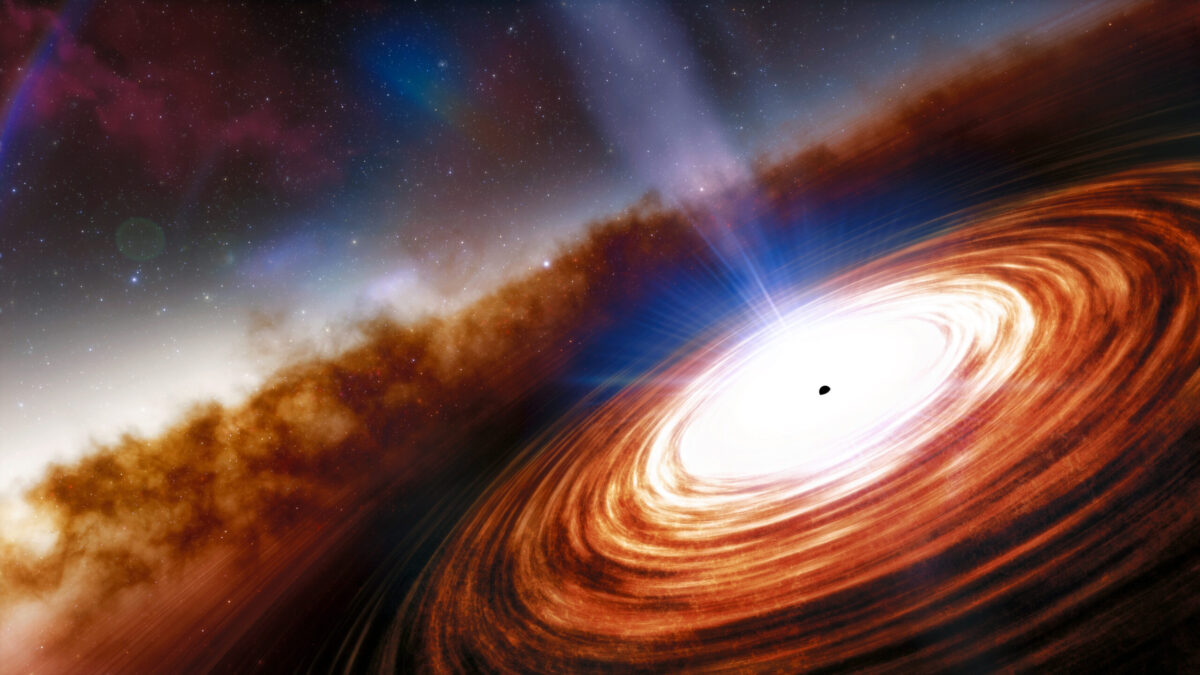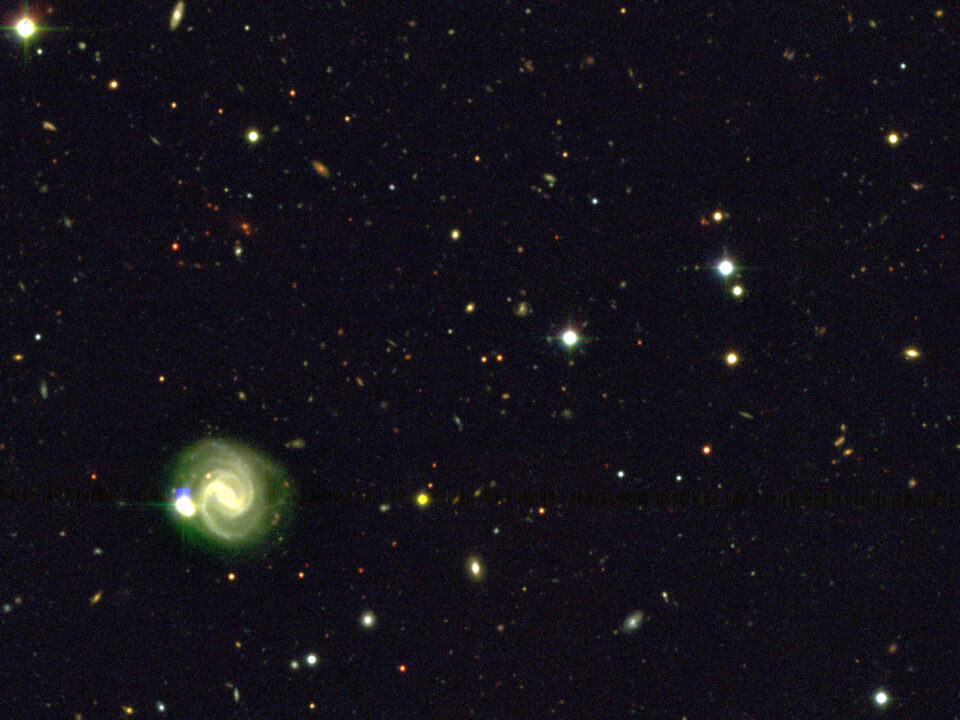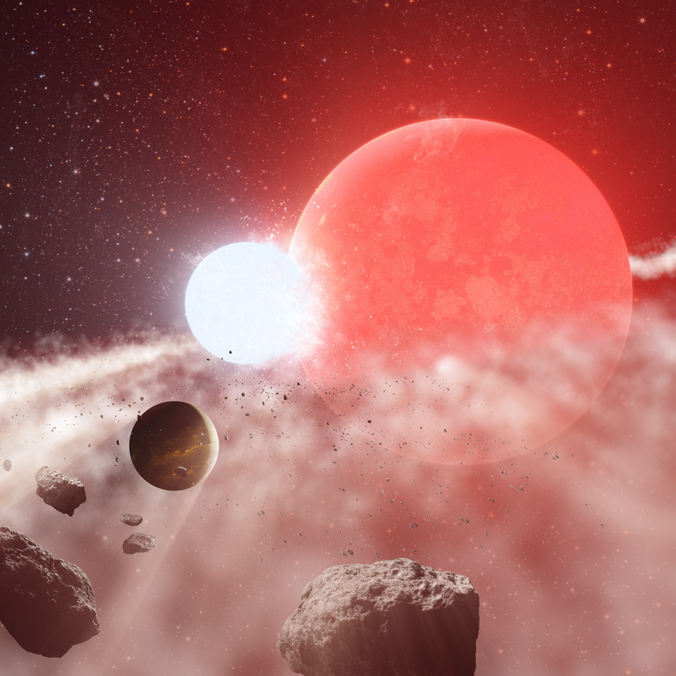The Earliest Supermassive Black Hole and Quasar in the Universe

Subaru Telescope Charts a Course to a Close-passing Asteroid
January 12, 2021
CFHT Stares at a Young Rebel: the AU Mic Planetary System
February 10, 2021An artist’s impression of quasar J0313-1806 showing the supermassive black hole and the extremely high velocity wind. The quasar, seen just 670 million years after the Big Bang, is 1000 times more luminous than the Milky Way, and is powered by the earliest known supermassive black hole, which weighs in at more than 1.6 billion times the mass of the Sun. Credit: NOIRLab/NSF/AURA/J. da Silva
Three Maunakea Observatories, the Gemini, W.M. Keck, and UKIRT observatories have announced the discovery of the most distant known quasar. The quasar, observed just 670 million years after the Big Bang, is 1,000 times brighter than the Milky Way Galaxy. It is powered by the earliest known supermassive black hole, which weighs in at more than 1.6 billion times the mass of the Sun. Seen more than 13 billion years ago, this fully formed distant quasar is the earliest yet discovered, providing astronomers with insight into the formation of massive galaxies in the early Universe.
Read more, in the NOIRLab/international Gemini and Keck Observatory press releases.
The international Gemini Observatory is a Program of NSF’s NOIRLab.




